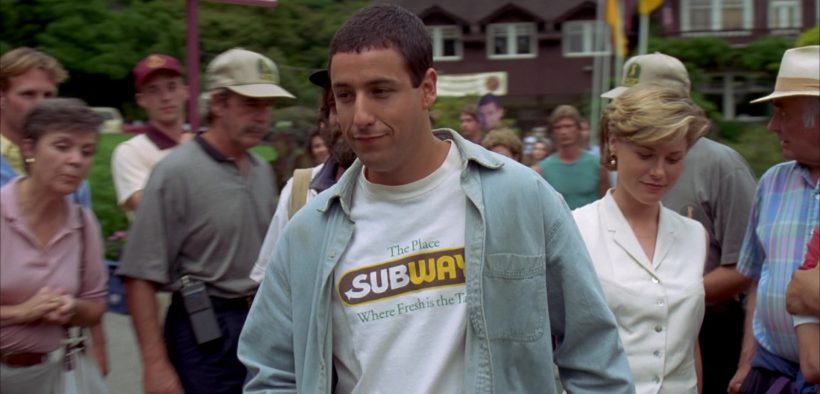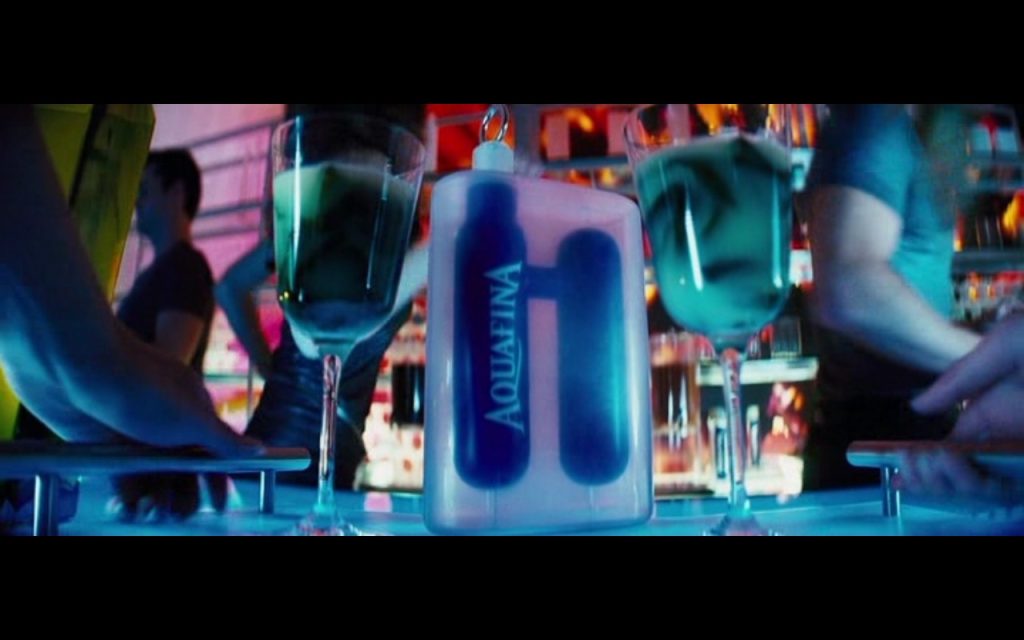Share

I don’t remember much about the film The Island. I remember a lot of plot holes, Scarlett Johanssen and Ethan Hawke, and a lot of labels: Speedos, Aquafina water, X-Box. A film I remember a lot about is Happy Gilmore: Shooter McGavin, certain, ahem, foods for breakfast, and of course – Subway sandwiches. What’s the thing that links all of this? Product placement. It’s a common film trope and marketing tactic – but does it work?
It’s not unusual for products or brands that we are familiar with to turn up in film and TV programs. From characters sipping Coca Cola through to Carrie Bradshaw so blatantly opening up a MacBook on Sex and the City, the products we use and are used to seeing every day aren’t on screen by accident. It’s an expensive spot to have your product being used and enjoyed.
Product placement is the unskippable ad
Most spelled out in the 1998 film The Truman Show, product placement is an advertisement that is either part of the script or appears as a prop within a show. It’s been a long feature of Hollywood, with product placement falling into two distinct categories: paid and unpaid. Some companies will pay to have a product front and centre, other times the film companies can save a pretty penny by featuring brands in the films in exchange for the product for free. Tony Soprano was king of the underworld in The Sopranos, driving around exclusively in Fords.
Instead of provoking the normal consumer routine of tuning out the ad, making a cup of tea, scrolling endlessly online or chatting to our loved ones, product placements are more subtle (sometimes). It’s supposedly a more nuanced approach to pushing a product. And, since its first documented example in 1896 when the Lumière brothers agreed to feature soap in their film Washing Day in Switzerland, product placement marketing is now valued at USD$23 billion.
“People aren’t paying attention to ads,” says Mike Proulx of the research consultancy Forrester.
In a 2021 survey conducted by Forrester, only five percent of adults in the US don’t or rarely skip ads on YouTube. Three-quarters of YouTube viewers said that they often, if not always, skip the ads.
“It’s the holy grail for a brand to be integrated into the actual content itself,” Proulx says.
The good, the bad and the obvious
Product placement is a great way to get a brand out there. Having someone using the product in situ is the best way for potential customers and consumers to see it used organically. But there are moments when product placement is a little too on the nose, cheapening the product and pulling the audience out from the film.
In the case of Michael Bay’s 2005 sci-fi flick The Island, it wasn’t so much one certain product that was distracting but rather the abundance of brands and labels. Branding took up primary real estate in the shots, detracting from the already messy plot.

Other times, the scripted part from the company is completely jarring within the context of the plotline. When it’s obviously an ad, it’s lost all of the value.
In admittedly a rather exaggerated example, American police drama Hawaii 5-0 inserted Subway product placement into the middle of a scene. But, it wasn’t so much product placement as it was a scripted ad. From holding the sub straight up to the shot through to declaring that the character was eating it to “lose weight”, the scene had all the semblance of an ad.
The success of product placement is about the seamless interplay between what’s happening on screen and the free market economy offscreen.
Because when product placement works, it’s worth its weight in gold – or sales. After season one of Stranger Things, US cereal brand Eggo was given new life. A once-floundering business, its presence throughout the series saw a 15 percent spike in sales.
Conversely, when Sex and the City’s Mr Big character, revived through And Just Like That, had a heart attack and died while riding a Peloton, company stocks plummeted.
All in all, product placement is working best when you don’t know you’re being sold a product or a lifestyle. So, the next time you’re watching Elf and you suddenly feel yourself becoming thirsty for a Coke, it might not be a coincidence. It might be because lead character Buddy just skulled two litres of it as part of an onscreen, script-fitting joke.









